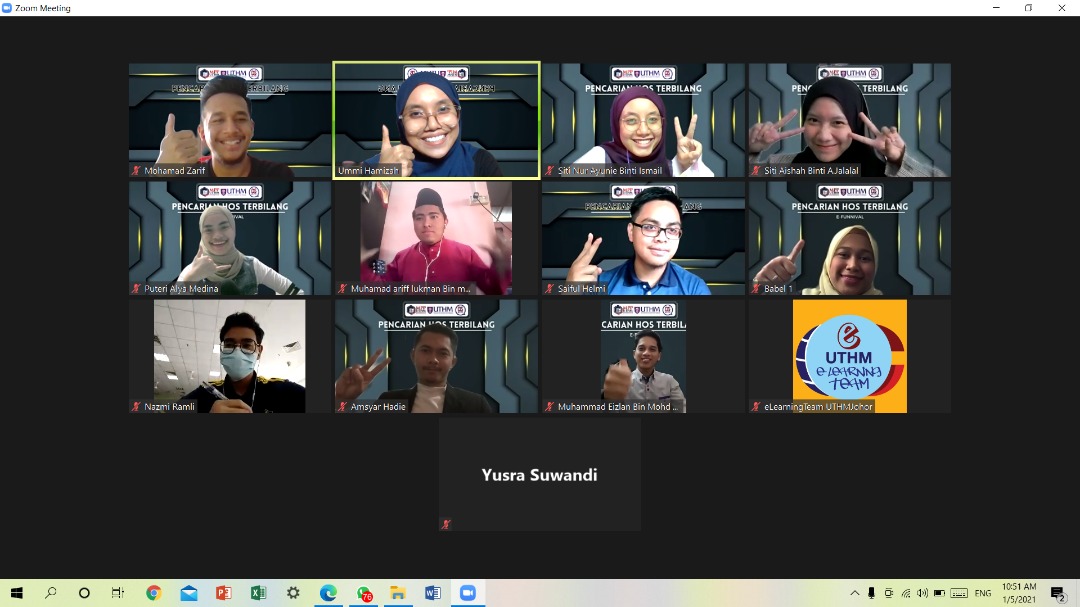
“Do you understand?”
“Are you still with me?”
“Can you re-tell your friends about the things that I mentioned earlier?”
Are you familiar with these questions? Perhaps you have used these questions during your online lectures to assess if students had paid attention In a regular conventional teaching and learning, students need to focus on the lectures and take notes and answer questions to show understanding. On the contrary, in the current online distance learning (ODL) era, it is hard to gauge students’ responses and understanding, especially, those who hide behind closed cameras. As such, online teaching and learning has truly become rather awkward with less in-class interactions and thus, left me bemused on what I could do to overturn the scenario . Coincidentally, at that juncture, I was introduced to Problem-based Learning by one of my very experienced senior, an ardent advocate of PBL.
PBL is the opposite of the conventional learning. The focus shifted from the teacher to the students. No more depending on neither the lecture slides nor memorizing the notes but actively engaging in analysing the given problem known as a trigger. This means that students take full responsibility of seeking and discovering knowledge through self-directed independent learning. Hence, very enthusiastically I incorporated Problem-Based Learning (PBL) in one of my classes for two sessions. I was convinced that learning the English skills in a PBL setting would allow students to take charge of their learning and provide more opportunities for interactions among themselves via the three different class activities; discussion, presentation and gallery walk which were carried out using the breakout rooms in Zoom.
Discussion
During the first session, in order to kick-start the PBL lesson, a trigger in the form of a series of pictures was given to each group. Each group then started to analyse the problem and list the learning issues. This was where they used the vocabulary that they already had to examine and scrutinise the trigger. Hence, previous knowledge resurfaced and connected with new knowledge. They could interact with peers regardless of their level of English proficiency. Although grammatical and structural errors were present, they could convey messages and understood each other naturally. At this point, I noticed that peer discussions allowed students to use English and it was less daunting than talking to a teacher. Learning had become more casual and friendly. Although some students resorted to code mixing and code switching English with their first language, yet English was widely used and their peers would jokingly remind them to use English out of competitiveness.
Presentation
Subsequently, during the second session of the PBL class, students came back after having completed their self-directed learning. Each one of them prepared power point slides and notes based on their research findings. In respective groups, they took turns to share their new found knowledge via a presentation and were actively engaged in the question and answer sessions. Based on my observation, many students very keenly took part and asked quite a lot of questions unlike being very passive in the teacher-centred conventional classroom. They could engage in serious discussions and sometimes even debated on the topic presented earlier. I, as the facilitator was just there to prompt them when necessary.
Gallery Walk
This was the highlight of the PBL class. After the presentations in respective groups, students had the freedom to walk around to see other group presentations and engage in more question and answer sessions. According to a survey conducted after the PBL class, most of the students preferred the gallery walk and they would like to have more similar activities in the future. They enjoyed having English conversations with their peers. Some stated that they gained more confidence in speaking English after the PBL sessions.
Beyond my expectations, the students were fully engaged in the English conversations and they kept using English as a means of communication without being told to do so. Their conversation had a smooth flow and was natural. If they did not get satisfactory answers, they asked more detailed questions. Sometimes, the presenters had to paraphrase or make a summary to make sure that their audience understood the topic presented. They learned to listen attentively and instantly process the information before asking more questions. Sometimes, they compared their research findings and discussed any similarities and differences that they could pick on.
On the whole, students’ interaction and feedback in the online classroom were very significant and precious. Therefore, we need to give more opportunities for them to use the language without the fear of making mistakes. Instead of listening to English, they speak English. Instead of being nervous, they are confident and relaxed.

Wardah Mohd Zuraimee
Language Teacher
Centre For Language Studies
Universiti Tun Hussein Onn Malaysia (UTHM)
*Editor: Dr. Elizabeth a/p M. Anthony









